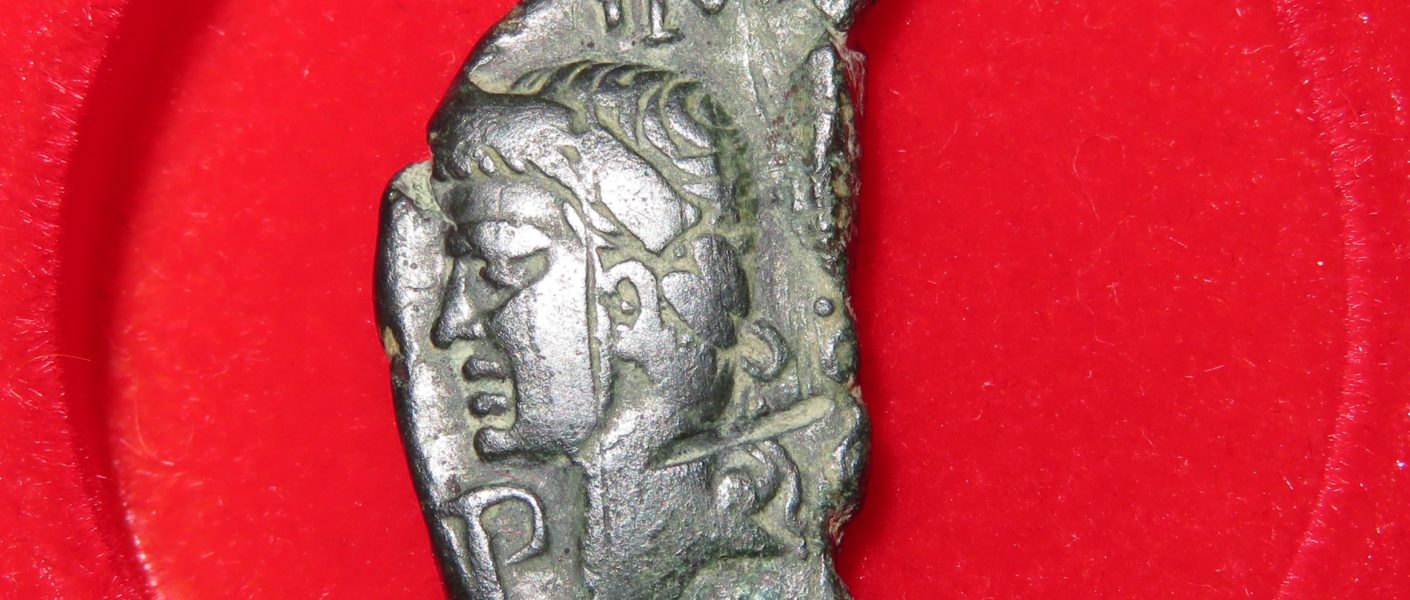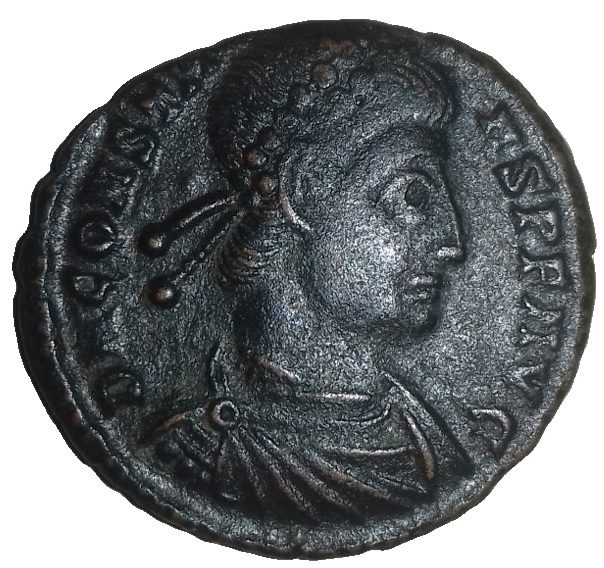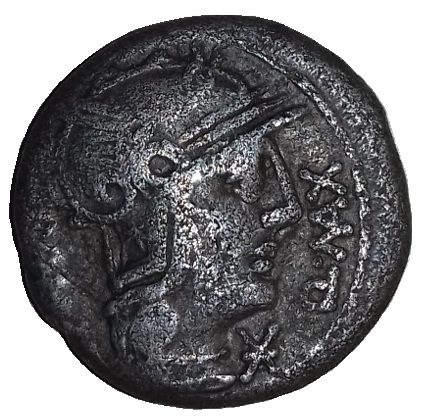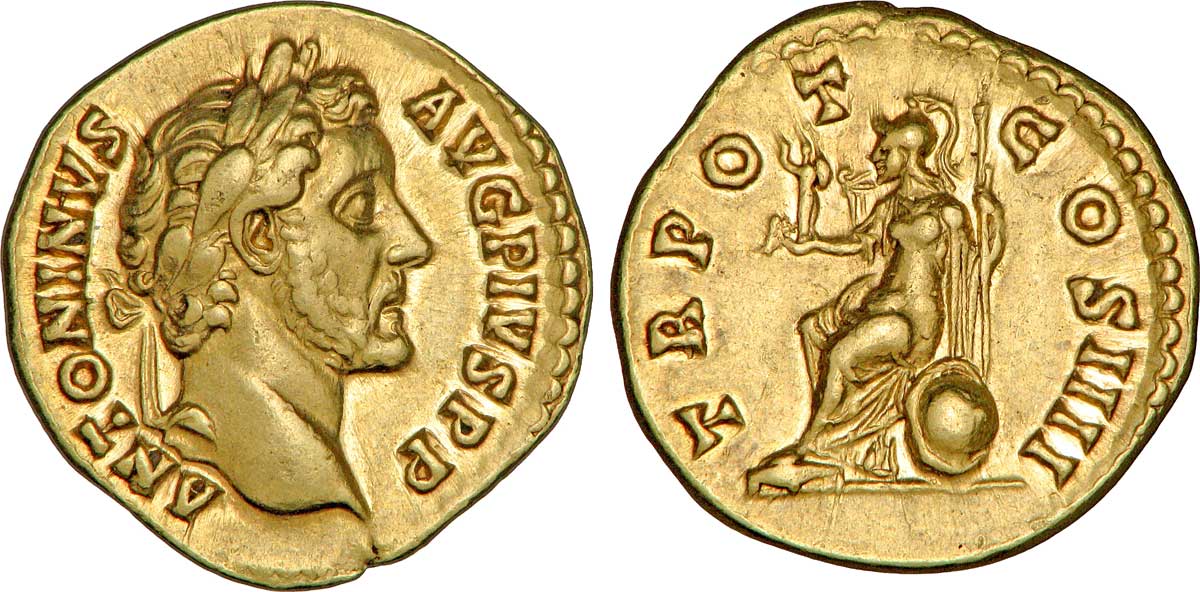Hi, today I will present three very emblematic Roman coins of Ancient Rome. There are two that are very well known by collectors and one which is a little known but very interesting anyway. These three coins are the Dupondius of Nimes, the as of Augustus at the altar of Lyon and a denar of Julius Caesar struck to celebrate his victory over the Gauls.
1st coin : the Dupondius of Nimes
The Dupondius of Nimes is one of the most well-known coins of the Roman Empire. As a reminder, an Dupondius worth 1/2 sesterce. He was struck from -29 to 10 AD in various forms. Indeed, the Dupondius of Nimes was struck in four types depending on the years that show some differences especially on the type of engraving … In addition, on some copies, the countermark DD (“Decreto Decurionum” or with the agreement of the delies were added). You could also see the countermark IMP (“Imperator” or “Emperor”).
The Dupondius of Nimes is a coin with two portraits on its avers. Indeed, on the averse, we can see the faces of Augustus (first Roman emperor from -27 to 14) and Agrippa (Roman politician). Over the course of the broadcasts, Agrippa was always lauré while Augustus showed up with a bare head or a laure head depending on what type it is. On the reverse, there is a crocodile chained to a palm tree representing Egypt’s submission to Rome.
This coin is common in the middle of the collection but is hard to find in good condition. Finally, the Dupondius of Nimes is usually present in the form of Dupondius but also in the form of half- Dupondius. Indeed, when the Dupondius of Nimes were struck, the Empire lacked divisional coins. As a result, they were broken in half in order to obtain lower-value coins. Today, it would be like cutting a 2-cent coin in half to have two 1-cent coins. Thus, the Empire could respond to the demand without having to mint other coins. And you’re surely wondering why the Dupondius of Nimes was targeted in particular? Well, simply because it presents two portraits. Thus, one could cut the coin in half, between the two portraits and have two halves with the full portraits on it, which the other coins did not offer.
2nd coin: the as of Augustus at the altar of Lyon
The as of Augustus, like the previous coin, is very well known in the middle of the collection. Moreover, and as the name suggests, he was struck in France, in Lyon. The Lyon monetary workshop was the main monetary workshop of the Empire until Caligula’s reign. Although it was less important thereafter, it remained among the main monetary workshops. This as worth 1/4 sesterce as well and was struck during the reign of Augustus so from -27 to 14.
The coin presents on its averse the lauré bust of Augustus. And on its reverse the altar of Lyon hence his name. This altar was an important political and religious place where a council called the Council of the Three Gauls met during the month of August. The three gauls were Aquitaine Gaul, Lyonnaise Gaul and Belgian Gaul. This coin is now easy to find with affordable prices although some coins in very good condition are harder to find and more expensive too.
3rd coin: Julius Caesar’s denar
This coin, unlike the previous two, is very rare. Indeed, here I speak of the denar of Julius Caesar struck for his victory over the Gauls, where a character seems to be Vercingetorix. This denar is so rare that I have only found it twice for sale and I have found only two images on the internet of it. It was sold in 2013 for about 77,000 euros and in 2014 for 49,000 euros. A denar is worth 10 as. It was struck in 48 BC and was therefore part of the Roman Republic.
As for the monetary workshop where it was hit, there is no information about him. On the averse of this coin, we can see the Clemency laure and wearing different jewels. On the reverse, we can see a Gallic warrior, perhaps Vercingetorix tied his hands behind his back to a trophy. This coin was certainly minted following the victory of the Romans in Alesia as the presence of the trophy and the Gallic on the reverse could be indicated. Today, this coin is one of the rarest Roman coins. And certainly the one that any good collector will dream of having.
Here are the three most emblematic coins of Ancient Rome. I remind you that this ranking is my own. Besides, if you have other coins that you would have put in this ranking. Feel free to point it out in the comment space. So, I hope that you have enjoyed this article and that it will have allowed you to discover one or more coins. The next article will focus on “5 typical Roman objects.”. Exceptionally, this article will not be published until two weeks from now. See you in two weeks and good holidays!
Get my free book Around the Roman Coin by clicking here




